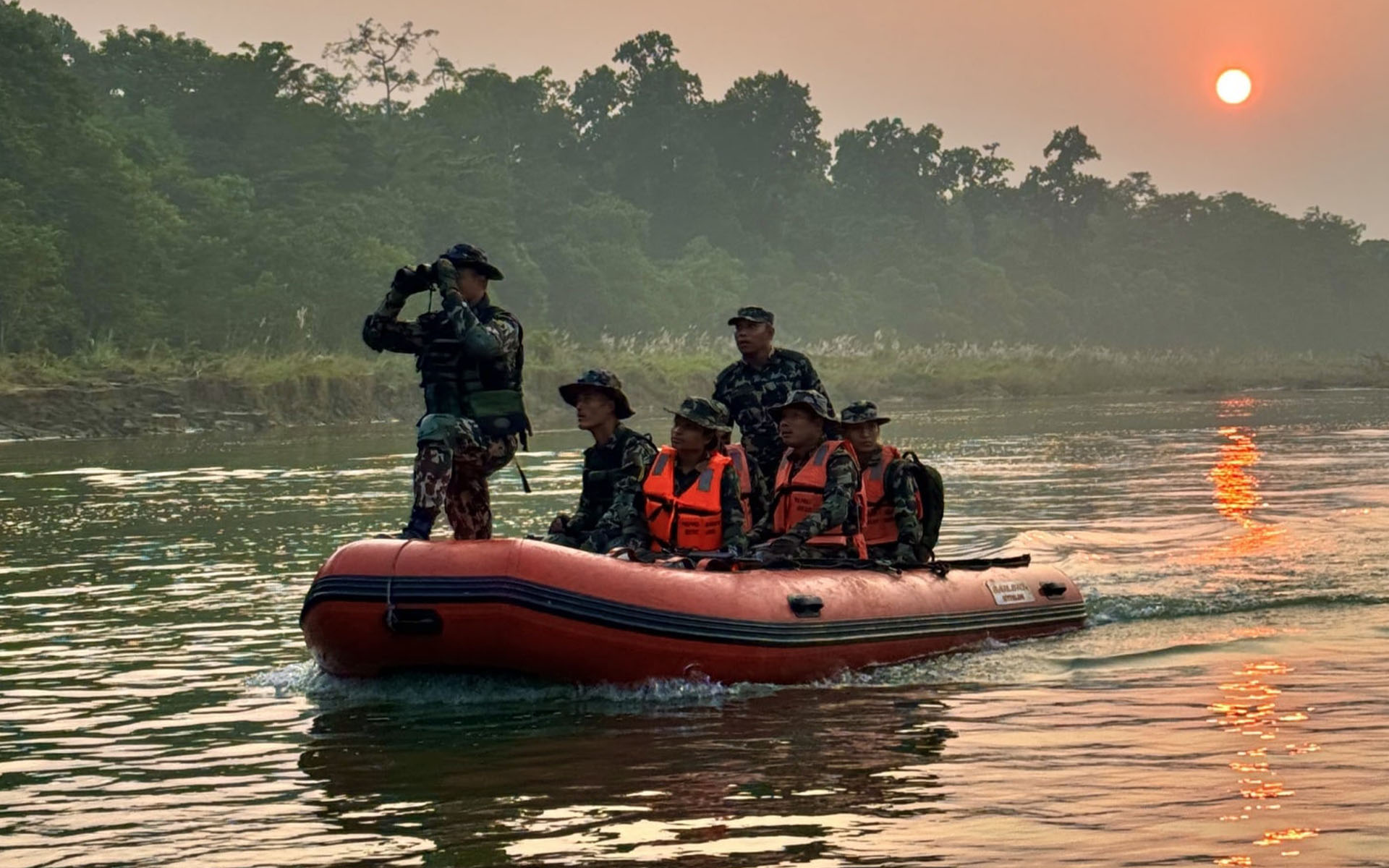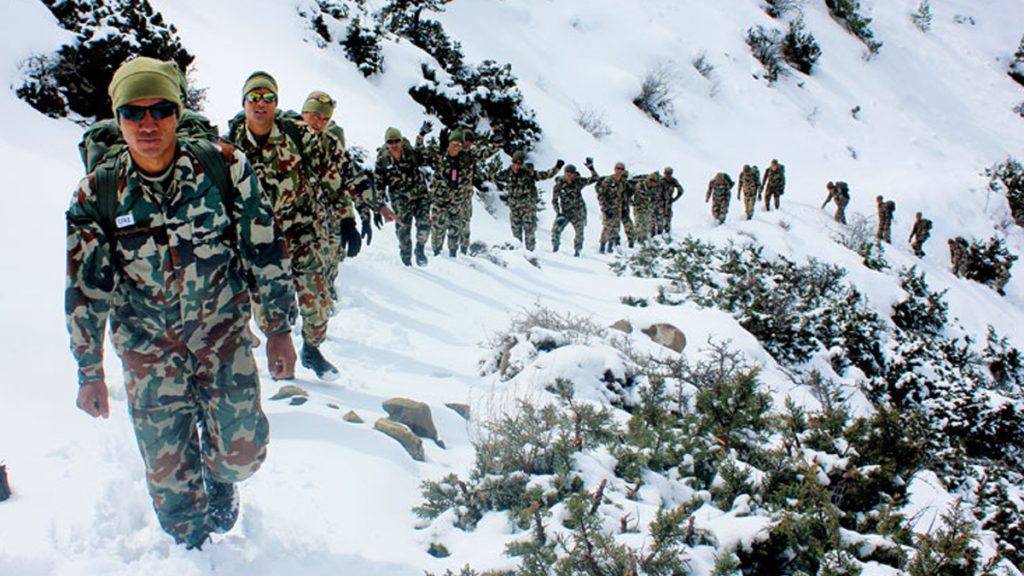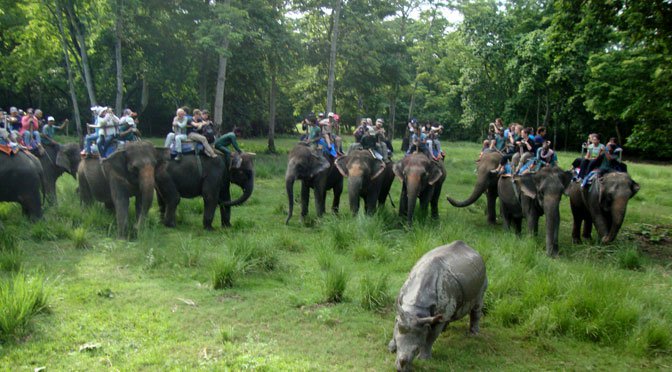

 19.27°C काठमाडौं
19.27°C काठमाडौं

For five decades, the Nepali Army has not only defended the nation’s sovereignty and contributed to international peacekeeping but has also played a pivotal role in protecting Nepal’s rich biodiversity and natural heritage.
In the late 1970s, the World Bank predicted that Nepal’s hilly forests would vanish by the 1990s. Defying those odds, Nepal nearly doubled its forest cover from 26% in 1992 to 45% by 2016. This success is largely attributed to two key efforts: the community forestry program and the Nepali Army’s protection of national parks.
According to Major General (Retired) and author Dr. Purna Bahadur Silwal, the Army’s consistent and dedicated contributions to conservation have yielded significant results. “The forest area hasn’t just expanded, the populations of endangered animals like tigers and rhinos have also increased. Nepal has received global recognition for achieving zero poaching of three flagship species- tigers, rhinos, and elephants. A major reason behind this is the crucial role played by the Nepali Army,” he commented.
Nepal’s commitment to tiger conservation has been especially noteworthy. At the 2010 Global Tiger Summit in St. Petersburg, Nepal pledged to double its tiger population by 2022. From just 121 tigers in 2009, the country reached 235 within eight years and 355 by 2022, becoming the first nation to fulfill the ambitious pledge.

Looking back, the Army’s conservation journey began in 2018 BS (1961 AD) with rhino patrols, after the one-horned rhino population had dropped from 800 to just 100. The number of rhinos has since risen to 752, according to the 2021 census. In 2030 BS (1973 AD), Chitwan was declared Nepal’s first national park, and two years later, the government officially handed over its protection to the Nepali Army.
Interestingly, Nepal’s conservation history dates back even further than that of Yellowstone National Park in the U.S. An inscription in Shivapuri-Nagarjun National Park indicates that public heritage conservation began in 1869, during the reign of King Surendra Bir Bikram Shah, three years before Yellowstone was established in 1872.
At present, about 8,000 army personnel are deployed across 14 protected areas, including 12 national parks, one wildlife reserve, and one hunting reserve. They operate under eight battalions, seven independent units, and one dedicated Nature Conservation Training School.
The Army’s conservation duties include park patrolling, preventing encroachment, combating illegal poaching, and controlling deforestation. “Besides patrolling, army personnel also engage with local communities through seminars to gather feedback about buffer zone management,” said Brigadier General Raja Ram Basnet, spokesperson for the Nepali Army and director of the Directorate of National Parks and Wildlife Reserves. “They assist in wildlife censuses, provide key information for conservation planning, and help rehabilitate species in collaboration with local and international partners.”
To prevent illegal activities, daily patrols are conducted on foot, by bicycle, in vehicles, by boat, and even on elephants—across terrains that range from the +42°C heat of the Tarai to the -20°C chill of the Himalayas. Conservation efforts have also been modernized using drones, CCTV, Smart Eye systems, vehicle tracking, and real-time patrol monitoring technology.

Special campaigns such as Operation Mahahunt and the ongoing Operation Sanrakshan are regularly conducted during festivals, dry seasons, and periods of heightened risk. Currently, Operation Sanrakshan-11 is underway to increase security and surveillance across protected zones.
While the Army’s role has been vital, conservation isn’t without challenges. Local communities often seek fewer restrictions, while the Army must enforce rules. This sometimes leads to tension over issues like foraging wild plants or grazing livestock in buffer zones.
Cross-border conservation adds another layer of complexity. Nepal shares an open border with India, allowing both wildlife and poachers to move freely. Effective conservation demands bilateral cooperation—especially in intelligence-sharing and law enforcement. “There is a pressing need for advanced scientific tools and closer coordination with Nepal Police, given the organized nature of poaching networks,” noted Spokesperson Basnet.
To strengthen conservation capacity, the Nature Conservation Training School was established in Kasara, Chitwan National Park, on July 12, 2014. It serves as a training hub for army personnel and other conservation partners. So far, 2,304 soldiers and 236 civilians have received specialized training, with plans underway to expand this to include ranger-level instruction for non-military participants.
Nepal has celebrated multiple Zero Poaching Years—in 2011, 2013, 2015, 2016, 2018, and 2019. Several army units have been honored with the Abraham Conservation Award, while Bardiya National Park received the prestigious TX2 Award for outstanding efforts in tiger conservation.
“These awards recognize the exemplary grassroots contributions made by army units with passion and dedication. The outcomes they’ve achieved are truly commendable,” Dr. Silwal concluded.